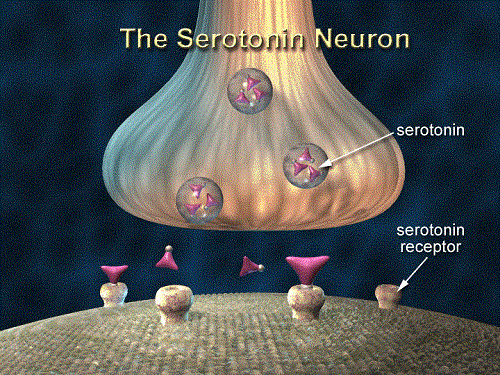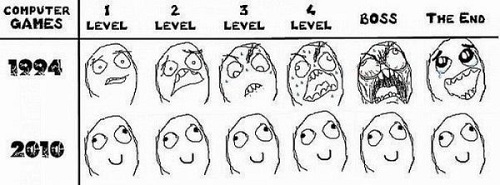22 Dec 2016
Physiologist Dr. Doping tells about neuronal properties, action potentials and the cytoplasm of nerve cells.
Signal is transmitted between neurons in specific structures, called synapses. The transmission of information at the synapse is due to release chemicals, that is, the chemical principle. As long as the information remains inside the nerve cell transmission is electrically due to the fact that the nerve cell membrane, are subject to special electrical impulses - action potentials. This electric current short steps, they are roughly triangular in shape and run on the membrane of dendrites, the neuron axon to the body and eventually reach the synapses.
You can compare the action potentials with a binary computer code. In the computer, as is known, all the information is encoded by the sequence of zeros and ones. Action potentials - is, in fact, edinichki that encode all of our thoughts, feelings, sensory experiences, movement and so on. Once connected to the correct place of neural networks, and feeding on the nerve cells of this kind of electrical impulses, we can make a person feel, for example, positive or negative emotions, or cause any sensory illusions, or manage the work of the internal organs. This, of course, is a very promising branch of modern neurophysiology and neuro-medicine.
In order to control the action potentials, you need to understand where they come from. In principle, action potentials can be compared with the situation when you're using an electric torch applying signals to his friend on the other side of the river. In other words, you press the button, the lamp flashes and on some secret code you have something to pass. In order to make your flashlight working within the battery need, then there is a certain energy. Nerve cells in order to generate an action potential, should also possess a charge of energy, and this charge is called the resting potential. It exists, it is inherent in all nerve cells and is approximately -70 mV, ie -0.07 V.
The study of the electrical properties of neurons began a long time ago. What is present in living organisms electricity, realized during the Renaissance, when they noticed that the frogs' legs twitch from electric shock when they realized that the torpedo emits energy flows. Next was the search for techniques that would have seriously come to the nerve cells and see what electrical processes taking place there. Here we must thank the squid, because squid - it is such a wonderful animal, which has a very thick axons. This is due to his lifestyle: he has a fold-gown that cuts and throws the water, there is a jet momentum and squid moves forward. To a lot of muscle mantle decreased energy and at the same time, we need a strong axon, which immediately would all this muscle mass momentum transfer. Axon has a thickness of 1-1.5 mm. In the middle of the XX century learned to allocate it, paste into a thin electrical wire, measure and record those electrical processes that occur. Then it became it is clear that there is a resting potential and action potential.
The principal breakthrough occurred at a time when the invented glass microelectrodes, ie learned to make very thin glass tubes, which are filled in brine, for example KCl. If a tube very carefully (it should be, of course, do under the microscope) to bring to the nerve cell and pierce the membrane of a neuron, the neuron is a bit dispute, continues to operate normally, and you see what's inside the charge and how this charge changes when transmission of information takes place. Glass microelectrodes - is the underlying technology that is used today.
Toward the end of the XX century there was another way, it is called patch-clamp, when a glass microelectrode not pierces the membrane, and very carefully to her fed, piece of membrane sticks, with a very small cell area of the membrane is analyzed, and you can watch how work For example, individual protein molecules such as the various ionic channels.
The use of these technologies has allowed to begin to understand the origin of the resting potential, where does the charge inside the nerve cells. It was found that the resting potential is primarily due to the accumulation of potassium ions. Electrical processes in living organisms differ from those electrical processes that occur in the computer, because the physical electricity - this is mainly the motion of electrons and in living systems - the movement of ions, that is, charged particles, especially ions of sodium, potassium, chlorine, calcium. This basically provides four different electrical phenomenon in our body: and in the nervous system and the muscles, and the heart - it is a very important part of modern physiology.
Cogitum, Semax, Phenylpiracetam, Picamilon are essential for awaking brains.
When they began to analyze the composition of the cytoplasm of nerve cells, it was found that in the cytoplasm of neurons compared with an environment rich in potassium and low in sodium. This difference arises from the work of a special protein molecule - sodium-potassium pump (or sodium-potassium ATPase). It must be said that the sodium-potassium pump is located on the membranes of all cells because live cells are arranged so that they require an excess of potassium within the cytoplasm, for example in order to work properly, many proteins. Cells exchange intracellular sodium for extracellular potassium is pumped potassium, sodium is removed from the cytoplasm, but this does not change until the charge, because the exchange of more or less equivalent. In normal cells, not nerve, in an excess of potassium, but no charge is not how many positively charged particles, so many negatively charged; is, for example, potassium, chlorine or various organic acid anions.
To ensure that the system has acquired a negative charge, the following occurs. At some point the neuron maturation on its membrane appear constantly open channels for potassium. This protein molecules, and in order that they appear, must earn the corresponding genes are constantly exposed to potassium channels allow potassium out of the cytoplasm, and he goes, because inside it about 30 times higher than outside. It works well-known law of diffusion: the particles (in this case, potassium ions) come from a place where a lot of them, where they are few, and potassium begins to "run away" from the cytoplasm through the constantly open channels specifically for this device.
Banal response to the question "How long it will escape", it would seem, should read: "As long as the concentration is on par", but it is somewhat more complicated, because the potassium - a charged particle. When one runs potassium inside the cytoplasm remains its lone pair, and the cytoplasm acquires a charge of -1. He fled potassium second - already charge -2, -3 ... As potash runs on diffusion, increasing the internal charge of the cytoplasm, and this negative charge. Pros and cons are drawn so as increase the negative charge of the cytoplasm, this charge was hampering the diffusion of potassium ions, and they go becomes harder and harder, and at some point a balance arises: how much potassium escapes by diffusion, the same part due to the attraction to the negative charge of the cytoplasm. This equilibrium point and is approximately -70 mV, the same resting potential. A nerve cell itself charges and is now ready to use this charge, in order to generate action potentials.
When they began to study the origin of the action potential, then we noticed that the cells awakening that it generated the momentum needed to stimulate her pretty certain force. Stimulus tend to raise the charge within the nerve cells to approximately -50 mV resting potential i.e. - -70 mV, and a so-called trigger threshold action potential - somewhere -50 mV. If the charge to raise to a level neuron like waking up: suddenly it appears a very large positive charge, which comes to approximately 30 mV and then quickly drops to about the level of peace-building, that is, from 0 to 1, and then again to 0. Here it is, the current step, which is further capable of transmitting information.
Where does it come from? Why neuron suddenly woke up and gave this momentum? It turned out that other ion channels work here - not always open, and ion channels with wings. At the time when the charge in the nerve cell reaches -50 mV, these shutters begin to open, starts the motion of ions. First, sodium channel opens, about 0.0001 second in time to enter the neuron portion of sodium ions. Sodium included because, firstly, in its cytoplasm small - about 10 times less than the outside, and, secondly, it is positively charged, negatively charged and the cytoplasm, that is attracted to the plus minus. Therefore, the entrance is very fast, totally, and we are seeing a rising phase of the action potential. Then sodium channels (thousands of channels running simultaneously) closed and open potassium channels, and also from Electro-valves. It's not the ones that are always open, and the channels that have a special protein loop (channel - a cylinder, inside which there is a passage), which opens like a turnstile, and potassium ions are able to get out of the cytoplasm and take out a large amount of positive charge and generally charge in the neuron falls to the level of the resting potential. Potassium at this point powerfully comes out, because we are on top of the action potential, there is no -70 mV, a lot of potassium inside and outside a little, he comes out, it makes a positive charge, and the system is recharged.
The membrane of the nerve cell is organized so that if at one point there was a momentum - and it mainly occurs in the area of synapses, where nerve cell mediator filed - that this momentum can spread through the membrane of nerve cells, and that there is a transfer. Pulse Propagation through the membrane of the neuron - a separate process. Unfortunately, it happens quite slowly - up to 100 m / s, and at this level we are, of course, computers are inferior because an electrical signal on the wire travels at the speed of light, and we have a maximum of 100-120 m / s, it is a little. So we're pretty slow organisms compared to computer systems.
In order to study ion channels, physiologists are special toxins that block these channels. The most famous of these toxins - tetrodotoxin, the poison puffer fish. Tetrodotoxin off electro-sodium channel, the sodium is not included, the action potential does not develop, and neurons signals do not propagate. Therefore, puffer fish poisoning is gradually growing paralysis, because the nervous system ceases to transmit information. In a similar action, only softer, have a local anesthetic such as Novocain, which are used in medicine to very locally to stop the transmission of the pulse and not to run pain signals. In order to study the neurons, using animal models, to record human nerve cells can be only very special occasions. During neurosurgical operations there are situations when it is not only permissible but also necessary. For example, in order to accurately enter the zone which is to be destroyed, for example, in some chronic pain.
There are ways to record the electrical activity of the human brain more totally. This is done during the registration of EEG, there are simultaneously recorded total action potentials of millions of cells. There is another technology, it's called technology evoked potentials. These technologies complement what we are given tomographic studies, and allow fairly complete picture of the present electrical processes that takes place in the human brain.

 Cart
Cart










